





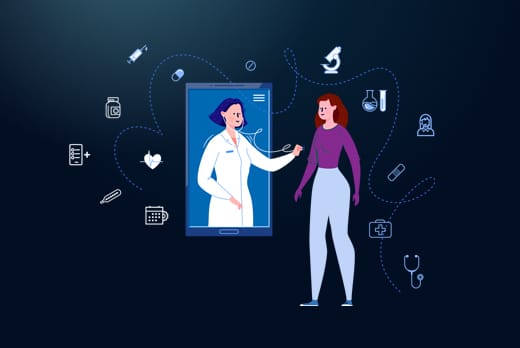
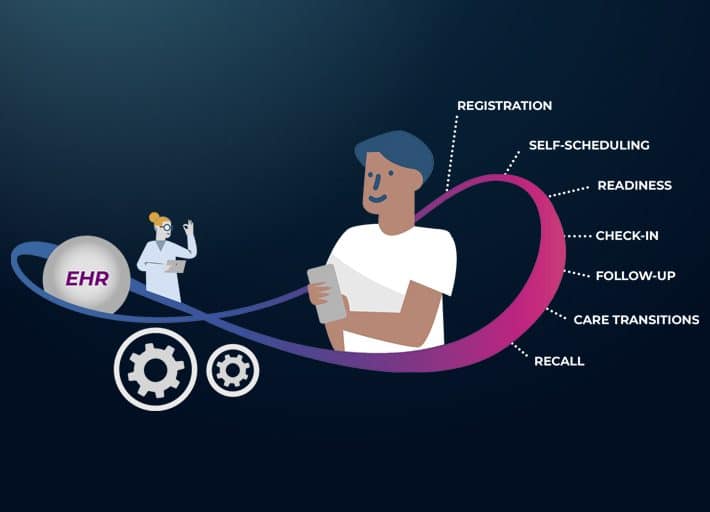
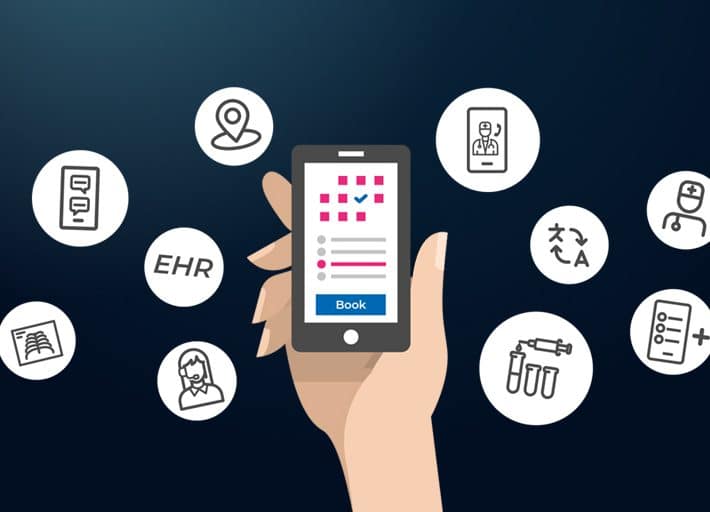
By Robbie Hughes, CEO, Lumeon One of the things that I regularly get asked is why so many other ‘service’ industries are consumer-friendly, whereas healthcare isn’t. The example given is always scheduling an appointment “Why can’t I schedule a healthcare appointment online like I can for my haircut/massage/movie/name your event?” The short answer is that […]

By Cindy Gaines, Chief Clinical Transformation Officer There’s a lot of interest these days in healthcare’s “digital front door.” For many, the digital front door seems to mean simply the ability to do self-scheduling. If a patient can make an appointment on their own using digital tools, then they’ve entered the digital front door, so they can check that one […]
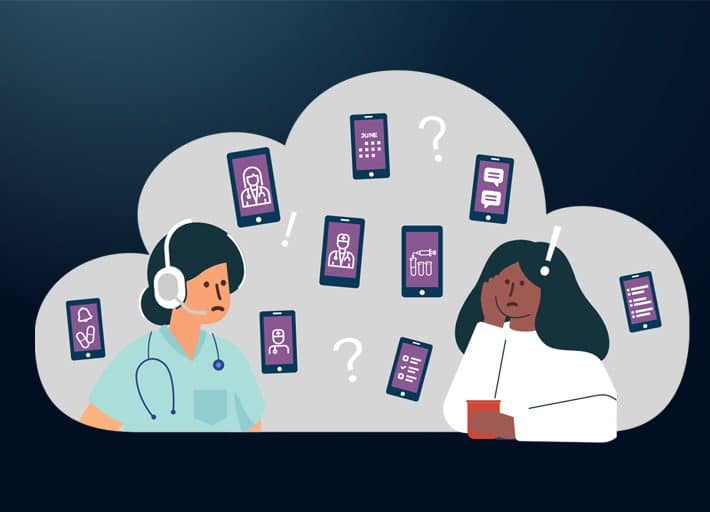
It’s an exciting time, where healthcare technology is adopted more easily and is profoundly changing the landscape. The pandemic accelerated this process. Many rushed to implement digital solutions resulting in renewed interest and rapid deployment of tools for video visits, digitizing access and intake, and ways to virtually care for and monitor patients. Unintentionally, the […]

It’s a far too familiar story: A patient — let’s say, Sally — comes to a healthcare provider seeking treatment and ends up feeling frazzled and frustrated by the fragmented, uncoordinated care she receives. Sally’s primary care doctor refers her to a specialist but leaves it up to her to contact them. The specialist orders […]

A simple guide to Care Journey Orchestration As featured on Modern Healthcare on 04-30-2021 Amongst the collateral damage caused by Covid-19, the traditional economics guiding the actions of many healthcare providers have been blown apart. So how do you deal with the fallout and address the pressing need for digital transformation at the same time? […]
“Digital transformation” is a phrase searched nearly 15,000 times a month on Google. It seems everyone is talking about the role of digital transformation in healthcare, but how many organizations are moving to implement it?
A recent survey indicates that many are—though they may be at very early stages. The survey, put forth by Lumeon earlier this year, found that 88% of respondents said digital transformation is moderately or very important to their organization over the next 12 months, and 93% said it will be over the next three years.
Clearly, digital transformation is here to stay, so what exactly does that mean for the healthcare industry moving forward, and how can hospitals use it to meet key objectives?
Healthcare organizations often turn to hiring more employees to solve many operational and even clinical problems. This is a costly approach, but it’s also not sustainable, as it is becoming increasingly difficult to recruit and retain new employees amid ongoing staffing shortages. Digital transformation can help hospitals maximize their existing resources while providing higher quality patient care, reducing the need to add new staff members.
That’s according to David Silvestri, MD, Emergency Physician and Senior Director of Care Transitions and Access at NYC Health + Hospitals, who served as a panelist during a recent webinar, Leading with Digital Transformation: How to Accelerate Your Patient and Care Team Experience Initiatives.
Digital transformation tools help you reach out to more people, intensify the amount of touch points you’re able to deliver and increase the quality and outcomes.They can actually help you better target your most expensive resource, which is your human capital, to those patients who need the most attention. – David Silvestri, MD.
Webinar panelist Jessie Israel, RN, MSN, Payer and Business Strategy Executive at Denver Wellness Associates and former CEO of HCA Healthcare Physician Services Group, agreed.
Institutions can’t keep throwing people at a problem anymore due to staff shortages and burnout. Instead, she said, it’s time to consider how digital transformation can help automate and augment processes. “When it comes to care transitions and patient follow-ups, please, please resist the urge to hire people to do 48-hour phone calls, send surveys, or fill out questionnaires.”
Israel emphasized that digital transformation should, in no way, be used to replace current staff members. Instead, it should complement their approach.
“When we’re looking at digital transformation, and specifically the access it enables, we think we’re going to be replacing people, and that’s not always the case,” she said. “As patients, we want that personal connection when we need it, and we also want to be able to serve ourselves. Looking forward, our challenge will be deciding where that sweet spot is and how providers can connect with patients at the right time and in the right way.”
That’s where digital transformation can help. Effective digital transformation tools can support personalized, timely interactions with patients that help them navigate their care end-to-end. The most effective tools adapt to each patient’s individual preferences, progress, and risk factors.
Dr. Silvestri noted that as hospitals and health systems embrace digital transformation to make processes more convenient and personalized for patients, they’ll also experience a positive impact on patient satisfaction, retention, and referrals. “Patients are going to be more likely to reuse your services,” he said. “They’re going to be more likely to recommend your services.”
The healthcare industry is seeing provider shortages, nurse shortages, and staff churn in unprecedented numbers. Add to that the fast-track, haphazard solutions patched together during the pandemic, and the industry is balancing on a fragmented infrastructure.
“It’s not only about what the patient needs under these conditions; it’s about what the care team needs,” said Cindy Gaines, RN, MSN, Lumeon’s chief clinical transformation officer, who was also a webinar panelist. “Using digital elements, such as automation, to take administrative tasks out of the day-to-day workflows frees up nurses and care team members to spend more time with patients.”
Digital transformation allows nurses and staff to work in the areas in which they are qualified and interested, which builds job satisfaction and retention.
“Most nursing teams are not uniquely skilled at data entry, remembering to check boxes, making referrals and filling out questionnaires,” said Israel. “Nurses enjoy their jobs when they are caring for people, helping them, offering reassurance, and decreasing confusion.”
Digital transformation enables nurses, providers, and care teams to work at the top of their licenses. It may sound counterintuitive, but adding automation and digital tools enhances staff job satisfaction and provider-patient relationships.
“It’s a win-win when we really think about it,” Gaines said.
The consensus is clear that digital transformation in healthcare is here to stay. Still, it’s also clear that many hospitals and health systems have a long way to go to achieve digital transformation maturity.
“The majority of [providers] are just getting started on this journey,” Gaines said. “We’re all in good company, and there’s no level of maturity that’s right or wrong.”
While embarking on the journey to digitally transform the patient experience it can feel overwhelming—it doesn’t need to be. Lumeon’s model for digital health experience transformation breaks it down into seven stages (see model below).
According to this model, the survey mentioned above indicates that most providers consider themselves in the earliest stages of digital transformation maturity. They offer basic conveniences like appointment reminders, online scheduling, and video calls.
“At this point, having a portal has really become table stakes,” Gaines said. “It was required for Meaningful Use. Everybody has one.”
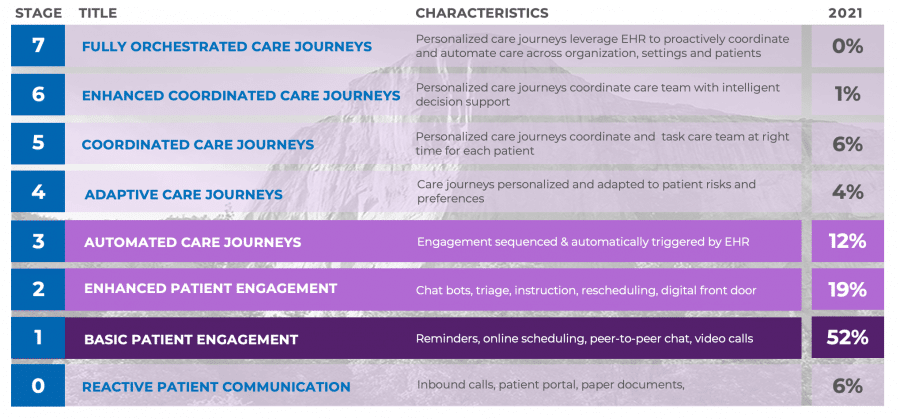
Because digital transformation is here to stay, organizations should take the first step by discussing and developing a plan. Here’s how to get started:
As Dr. Silvestri said:
Why should we do this now? Because it’s the right thing to do, and it’s good patient care. -David Silvestri, MD
Contact us today to see how Lumeon’s care orchestration engine supports digital transformation and can help your organization increase capacity, improve the patient experience, and enhance staff satisfaction.